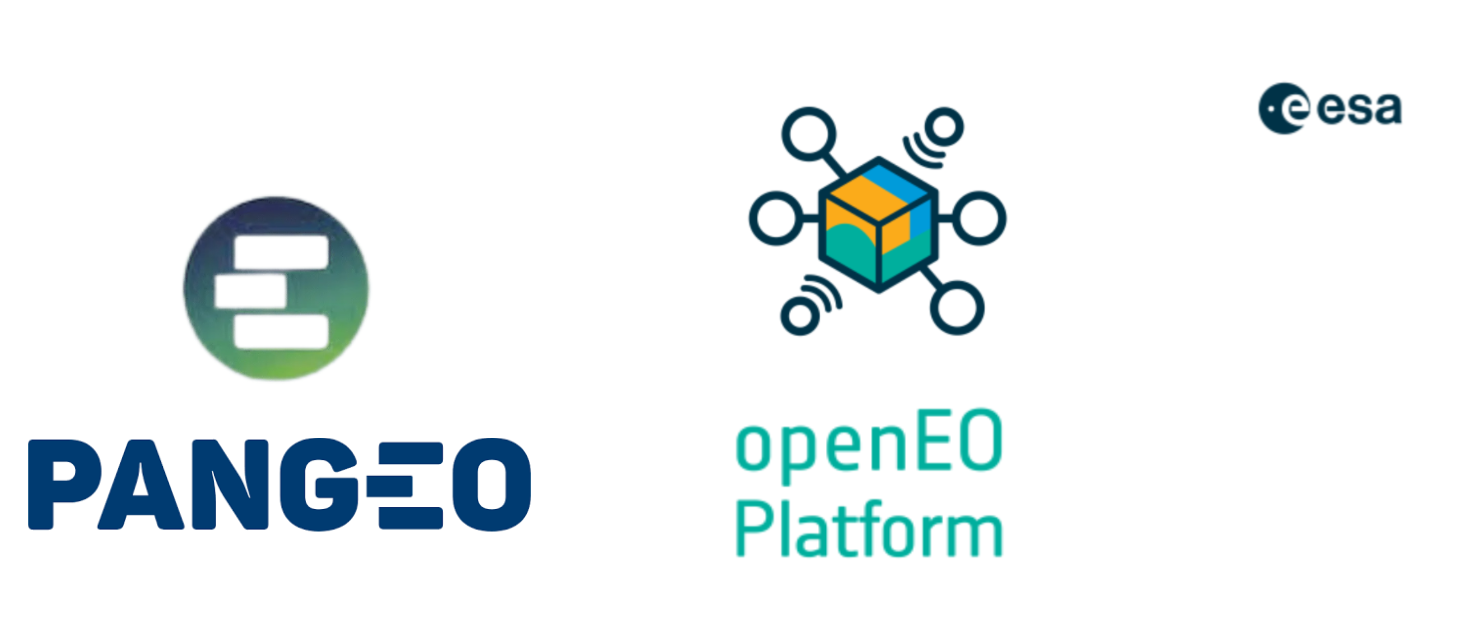Advanced workflows in openEO#
Objectives#
Learn about what is achievable with standardized openEO processes
What are openEO platform ‘credits’
Learn about metadata generation in openEO
Algorithm types#
When writing an algorithm in openEO or Pangeo, the first thing to do is to determine the type of algorithm. Once you know the type, you can fall back to well-known examples as a template to implement your algorithm.
Using the right method for your type of algorithm also ensures that it can be parallellized and executed in the most efficient way. An algorithm that only requires a single observation for instance, does not need to bother with retrieving a full timeseries of observations.
In part 2 of this tutorial, we’ll cover a few common types:
single observation, single pixel
temporal analysis over a single pixel
In part 3, we have an example of an analysis that requires multiple values in both space and time.
Case 1 Rank composites#
Scientifically correct compositing is the foundation of many EO processing workflows. This case shows a max-NDVI composite, which is also a template for more advanced composites.
Key takeaways:
Use array_apply to ‘loop’ over data
Create masks to selectively load data
Algorithm type:
Spatial neighborhood for cloud proximity score/masking
Per pixel temporal analysis for scoring
Case 2 Machine learning training and inference#
Timeseries based classification of pixels to assign categorical labels is another base-technique in the EO toolbox. This example uses Random Forest, which is superseded by more advanced AI models, but is still regarded by many as a baseline against which more complex approaches can be compared.
Operational products, like Copernicus landcover 3.0 are also based on random forest.
Key takeaways:
Merging Sentinel-1 and Sentinel-2 data cubes
Transform a timeseries datacube into features for learning
Use ML processes directly from openEO
Algorithm type: per-pixel timeseries analysis
Dynamic landcover: https://docs.openeo.cloud/usecases/landcover/
Case 3 ESA WorldWater#
ESA WorldWater is an example of rule based classification, using Sentinel-2 and Sentinel-1, it was developed by DHI-GRAS.
Key takeaways:
Use of complex, rule-based classification
Algorithm type:
temporal compositing into ARD
single observation, single pixel, analysis
Note: the most recent code of this example is still under review in a pull request, so we include the relevant bits inline.
DHI-GRAS/worldwater-toolbox DHI-GRAS/worldwater-toolbox
ESA Worldwater formulas are written using predefined functions:
from openeo.processes import if_, exp, array_element, log, count, gte, eq, sum
LOOKUPTABLE = {
"Deserts": {
"S1": lambda vh, vv: 1 / (1 + exp(- (-7.03 + (-0.44 * vv)))),
"S2": lambda ndvi, ndwi: 1 / (1 + exp(- (0.133 + (-5.92 * ndvi) + (14.82 * ndwi)))),
"S1_S2": lambda vv, ndvi, ndwi: 1 / (1 + exp(- (-3.69 + (-0.25 * vv) + (0.47 * ndvi) + (15.3 * ndwi)))),
},
"Mountain": {
"S1": lambda vh, vv: 1 / (1 + exp(- (-3.76 + (-0.262 * vv)))),
"S2": lambda ndvi, ndwi: 1 / (1 + exp(- (0.262 + (0.75 * ndvi) + (12.65 * ndwi)))),
"S1_S2": lambda vv, ndvi, ndwi: 1 / (1 + exp(- (-1.13 + (-0.11 * vv) + (3.03 * ndvi) + (13.21 * ndwi)))),
},
...
}
An openEO ‘apply_dimension’ over bands is used to compute final water occurance.
from openeo.processes import if_, exp, array_element, log, count, gte, eq, sum
merged = s1_s2_water.merge_cubes(s2_median_water).merge_cubes(s1_median_water)
def combined(bands):
s1_s2_water = bands.array_element(0)
s1_s2_mask = s1_s2_water >= 0
s2_median_water = bands.array_element(1)
s2_mask = if_(s1_s2_mask == 0, s2_median_water) >= 0
s1_median_water = bands.array_element(2)
s1_mask = if_(s2_mask == 0, if_(s1_s2_mask == 0, s1_median_water)) >= 0
s1_s2_masked = if_(s1_s2_mask != 0, s1_s2_water, 0)
s2_masked = if_(s2_mask != 0, s2_median_water, 0)
s1_masked = if_(s1_mask != 0, s1_median_water, 0)
return s1_s2_masked + s2_masked + s1_masked
merge_all = merged.apply_dimension(combined, dimension='bands')
A similar water detection example is the AquaMonitor, developed by Deltares: c-scale-community/use-case-aquamonitor
Accounting in openEO platform#
When running openEO scripts on small scale locally, you use your own resources. When running at larger scale in the cloud, this generates a small cost per run.
While these costs are often relatively small compared to the time savings, it is important to keep track of. Here we explain how to do exactly that.
